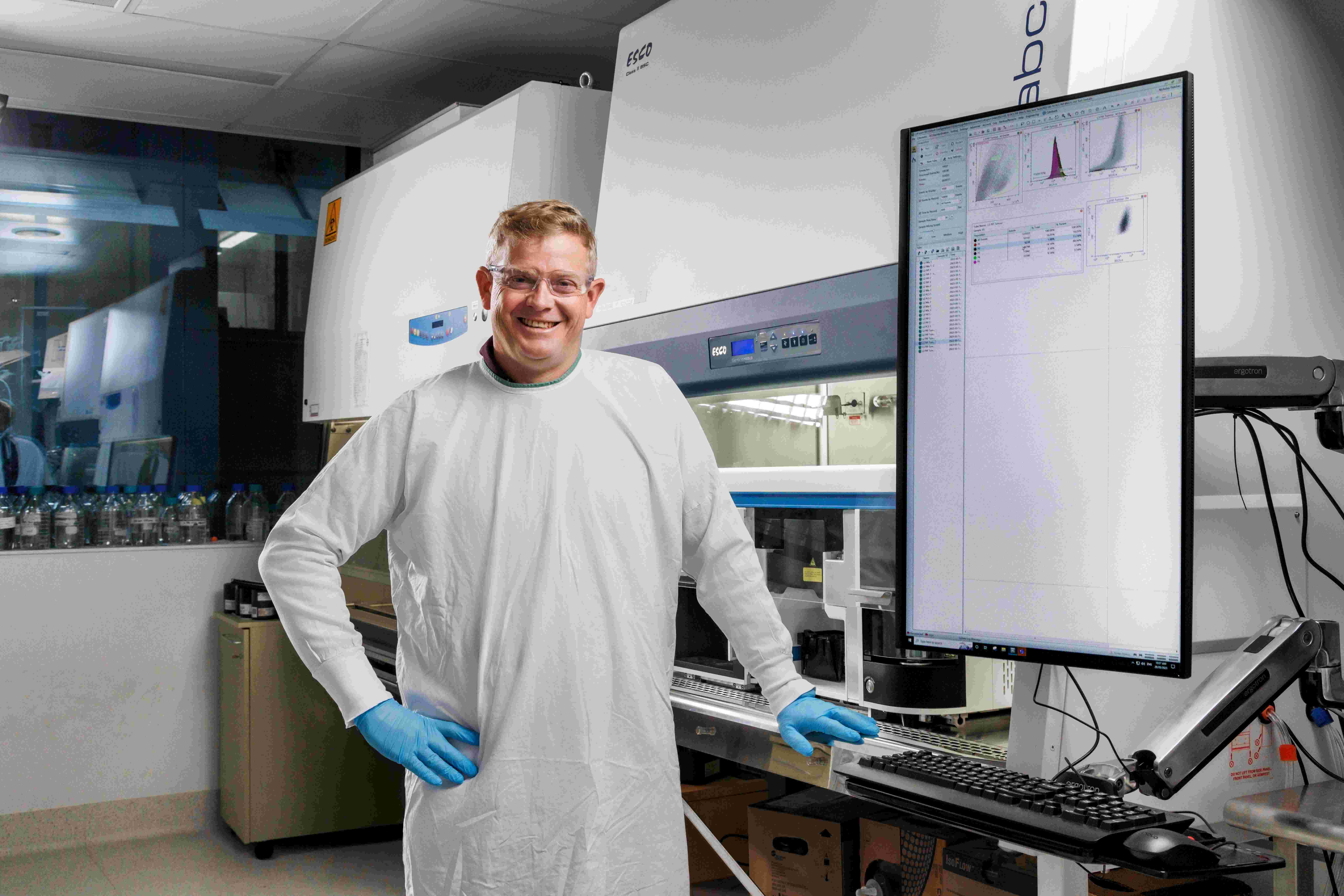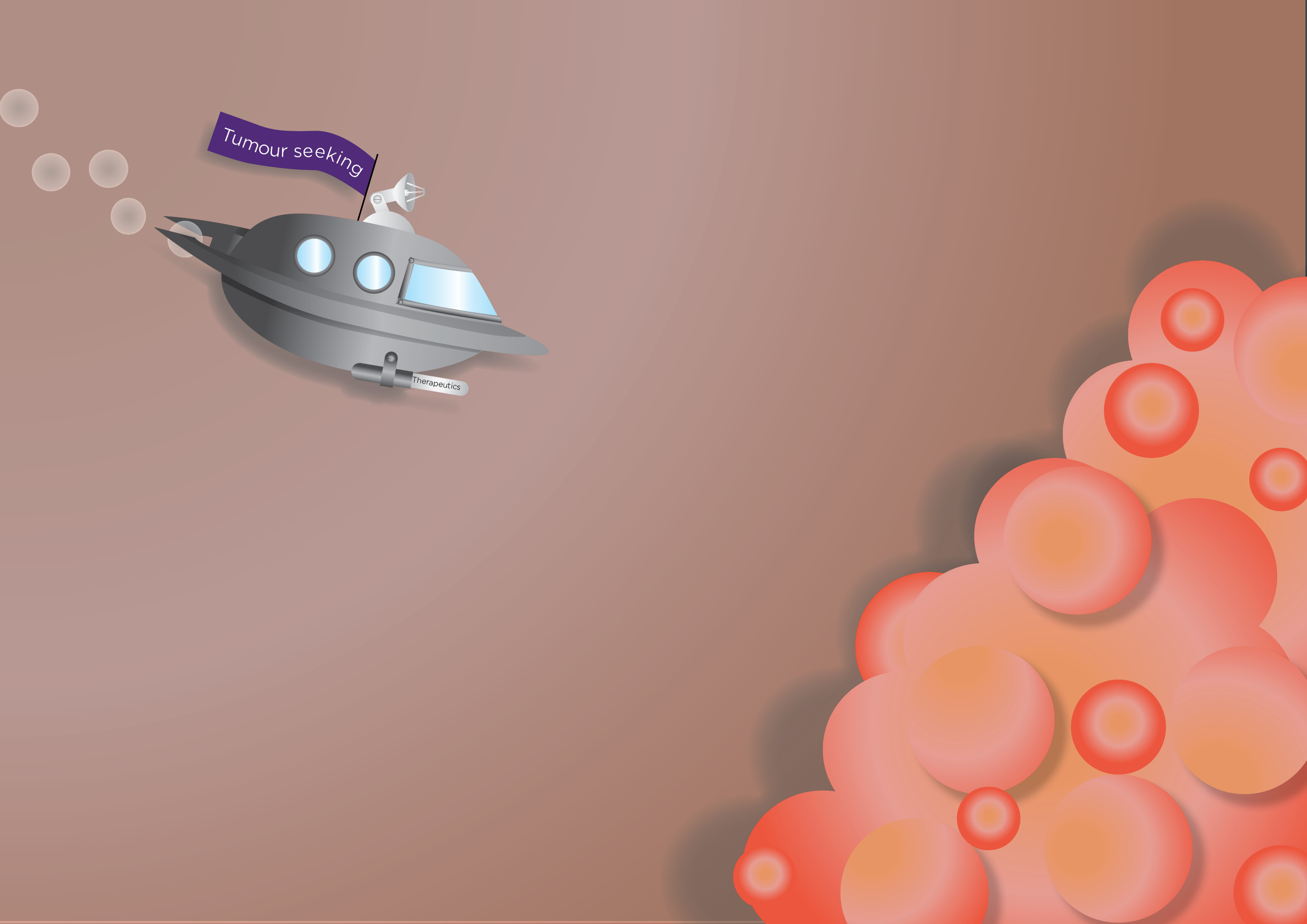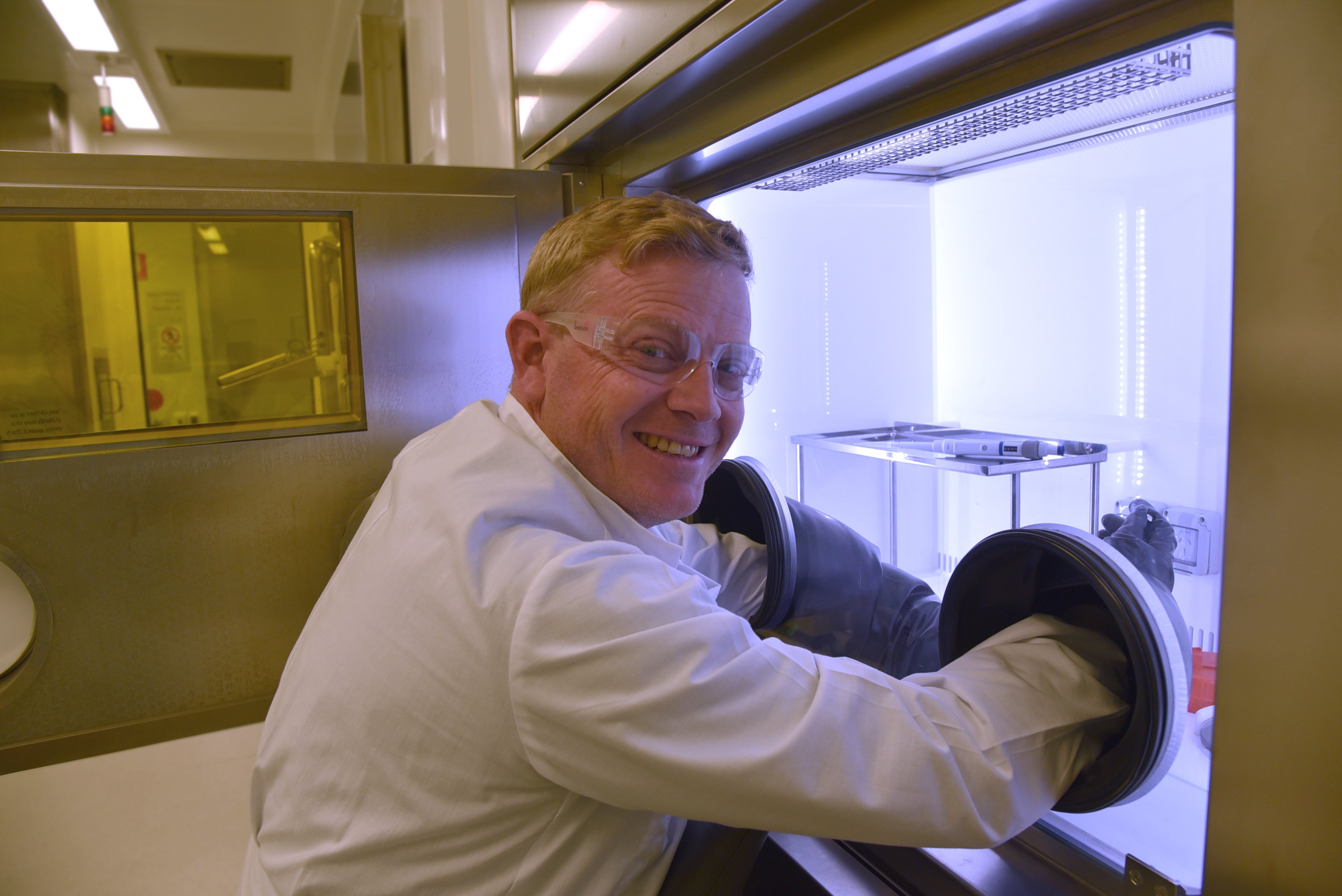For decades researchers have had access to nuclear medicines that are very, very good at identifying and killing cancer cells.
Unfortunately, these extremely toxic payloads are also great at damaging healthy cells – a major issue if they’re administered into the body indiscriminately, with limited accumulation in the problem area.

Thankfully, Professor Kris Thurecht and the AIBN team are working to improve the targeting ability of these molecules to unlock the power of radiopharmaceuticals.
“In the 60s they tested certain isotopes and found them to be so toxic that you really would not even consider using them in a person,” Kris says.
“You absolutely need this drug to go where you want it to go, and nowhere else. And that takes a lot of prior design, engineering and testing of the molecule.
“And now – because of places like the Australian Institute for Bioengineering and Nanotechnology – we can revive some of those ideas and reenergise the concept that they can be developed into a highly potent therapeutic.”
Having started his career in physics and chemistry, the evolution of Kris’ research has coincided with the emergence of radiopharmaceuticals as a promising new diagnostic and treatment tool for cancer.
He’s been a fixture at the AIBN for 15 years, starting as an ARC postdoctoral research fellow, rising to lead his own research group, becoming Deputy Director of AIBN’s Centre for Advanced Imaging, and in 2022 being named director of the ARC Hub for Advanced Manufacture of Targeted Radiopharmaceuticals.
In 2023 Kris was named the AIBN’s Deputy Director of Research, a position that much like the field of radiopharmaceuticals - ties together different scientific skillsets for the greater scientific good.
“We are in a unique position at the AIBN to rapidly identify holes that exist in the biopharmaceutical market, and we can address those holes with our research. This is enabled by embedding leading researchers in the field within world-class research infrastructure, a model that AIBN successfully uses to innovate and translate discoveries,” Kris says.
“It’s a complete biotherapeutics pipeline”.
Read on to learn how Kris Thurecht and his team came to be at the forefront of radiopharmaceuticals research, and how the AIBN is partnering with industry to develop a new range of diagnostics and therapies.

Kris, your first question: tell us about radiopharmaceuticals. What are we dealing with here?
In a nutshell, radiopharmaceuticals are a class of drugs that we use to very, very selectively target and kill cancer cells.
Therapies like chemotherapy and radiotherapy have traditionally been the backbone of cancer treatments but, as we all know, healthy cells are also damaged, and we can see quite intense side effects on the body.
With radiopharmaceuticals, we take proteins or antibodies that have a very high affinity for drug tissue, meaning they are great at accumulating in certain parts of the body, and we equip these proteins with a toxic payload called a radionuclide.
The big hope here is that we can send these payload-equipped proteins directly to the place they’re meant to go and blast away problem cells, sparing the patients from the harsher side effects you get with other cancer treatments.
So these drugs are specific to an individual patient?
Yep – this is a great example of how medicines can be personalised, taking out the indiscriminate nature of conventional drugs. In this case, you’re screening a patient with a diagnostic, identifying whether that patient is responsive or that they express a particular protein in an area that you're interested in, and then you’re developing a therapeutic radiopharmaceutical based on that protein target.
Following this process there is an extremely good chance that the patient you are treating is going to be receptive to the drug. In the past that hasn’t necessarily been the case. In many other diseases clinicians might try a cocktail of drugs until something works.
The personalised medicine approach overcomes that. It’s a concept that has evolved significantly in the past five to ten years and a key focus for us here at the AIBN.
Radiopharmaceuticals are a relatively new concept?

Well, technically radiopharmaceuticals have been around for decades, but they’ve had a massive revival thanks to advances in scientific infrastructure and instrumentation, industry influences and other innovations or breakthroughs that make a whoile new range of drugs possible.
The biologics field has tracked in a certain way that has given us far, far more control over taking a molecule and making sure it is specific for a particular tissue.
How does the AIBN tackle radiopharmaceuticals?
Much like the radiopharmaceuticals themselves, the AIBN connects the divide between the radiochemistry and imaging with biologics.
We’ve got the cell factories, the ability to express proteins, the ability to control how that expression manifests, and the ability to combine that with the potent radio work.
Another big part of the picture is that we’re a big believer in leveraging the wins and funding and support we receive.
In 2021 we received $1.2 million from the Australian Cancer Research Fourndation to establish a radiopharmaceuticals facility (AFTRiC) to study and develop new ‘alpha therapies’ to kill cancer without damaging healthy tissue.
We then took that successful proposal and posed the idea to the National Collaborative Research Infrastructure Strategy (NCRIS) through the National Imaging Facility (NIF) that, with NIF support, we could turn this into a truly national facility that enables end-to-end evaluation of new radiotherapeutics.
So NIF provided an additional stake in the research facility, which was then observed by the Australian Research Council when setting up the hub for Advanced Manufacture of Targeted Radiopharmaceuticals (AMTAR). I’m the hub’s director, and UQ is set to play a leading role, developing new technologies and establishing a platform for design, manufacture and quality assurance of targeted radiopharmaceuticals in collaboration with leading industry partners in Australia and abroad.
So building our capability like this basically means we are one of the few places in the world where we can do end-to-end evaluation of ideas and new products, which is what the industry love and why we have such strong links with industry.
We’re enabling the next steps in the discovery and innovation pathway.
Kris how did you yourself come to the field of radiopharmaceuticals?

It’s funny because I was always a physics, chemistry, maths kind of person. I did my PhD and honours in physical chemistry right here at UQ. I didn’t even do biology in high school. I never, ever thought I would be moving into this space.
Even when I came back to Australia in 2008 after a stint in the UK, I took a joint role at the AIBN and what used to be called the Centre for Magnetic Resonance, and that was very much around imaging and polymer chemistry and material science.
The wild thing is, now my research group at the AIBN would be about 70 per cent biologists or maybe more. I’m being taught by them!
And again, it is because melding biologics and imaging is incredibly crucial to radiopharmaceuticals. It also happens to be something that the AIBN does brilliantly.
We are in a position to identify the holes that exist in the biopharmaceutical field and market, and we can address those holes with our research, that’s enabled by the equipment we have.
It’s a complete biotherapeutics pipeline, from discovery to translation.
A biotherapeutics pipeline?
Stay on top of our industry news and developments, events and opportunities, by joining The NetworkJoin The Network
What we want to show people is that we can enable pretty much every step from the initial idea through to clinical assessment.
We’ve built up that capability within AIBN. For example, our industry partners may come to us and say we’ve got this idea around this target, we’ve identified that this might be a lead compound for us, can you help us establish whether it’s going to be useful as a radiopharmaceutical, but also how can we improve it?
We can then develop, evaluate or express those proteins up here in AIBN, evaluate their efficiency in various stages, including perhaps using the AIBN’s organoid facility. And then we rapidly move to preclinical evaluation, cell evaluation, and the biological analyses.
An important thing that we have coming online in the future is phase one enabling manufacturing. Having this means we can then take what we do here at AIBN and have a direct pipeline to manufacturing product that is ready for injection into humans, which is key for us.
Manufacturing is the missing step in Australia, and we have been lucky to be an enabler of that recovery in a way that no-one else has.
And I think our industry partners see that it could potentially be far easier to do everything here than bits and pieces all over the place.
So clearly this is more than simply being a service provider
Absolutely. Our partners are after our knowledge on how to improve their product. Not simply whether their product works or not. It’s levelling up with them and helping them think about their next lead, what things might look like in five years’ time and how we get there together, in a true collaboration.
I think that’s why we’ve been successful. We haven’t just provided a service. We’ve provided a partnership. And that’s why they keep coming back for more.
In addition to the potential health benefit, it is also important to develop an improved mechanistic understanding for the field, and doing this in an academic setting at all levels of the process is key to progressing.
I think it’s also important here to recognise how this sets up our PhD scholars.
The environment here for PhD’s and early career researchers who are willing to be part of that bigger picture and take a role in answering whatever the challenge might be …. It’s second to none.
Nowhere else do you have links to these capabilities. You can start by being a chemist and working with very small molecules and thinking that this is going to be your life. And then in three years’ time at the end of your PhD you’re suddenly doing clinical evaluation or imaging animal models to evaluate a product.
That’s end-to-end stuff. There are very few places, internationally or elsewhere, that you can get that expertise, and that’s why our PhD scholars are so sought after across the board.
I think that that is central to who we are and where we are heading because these students are the people who will be identifying the next set of problems and addressing the challenges of the future.


